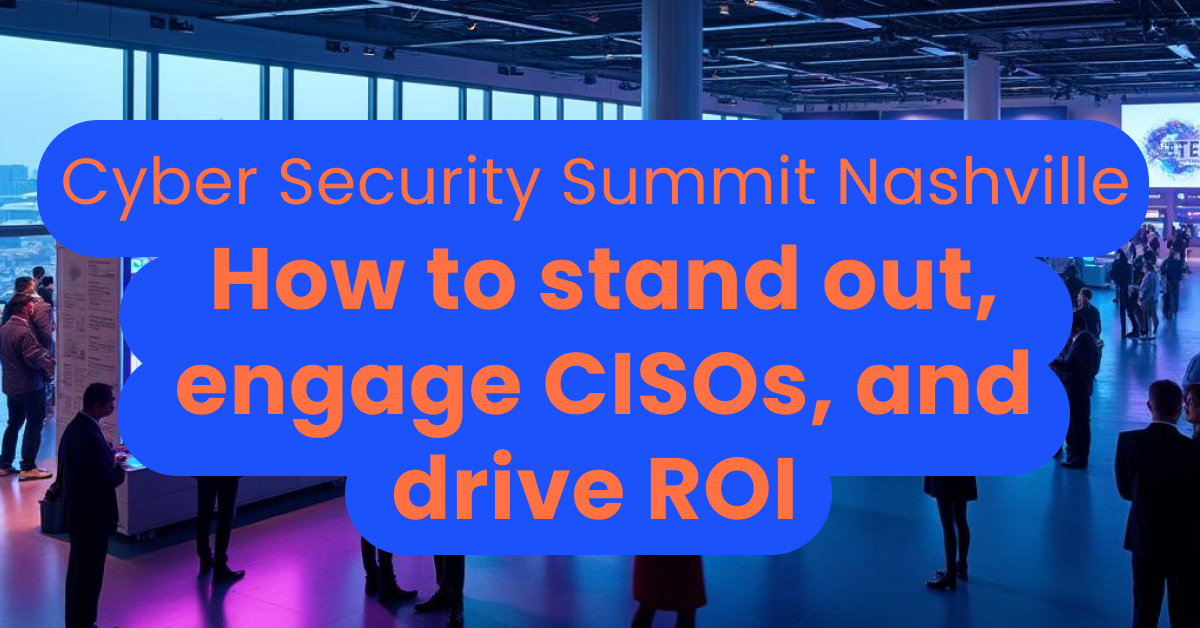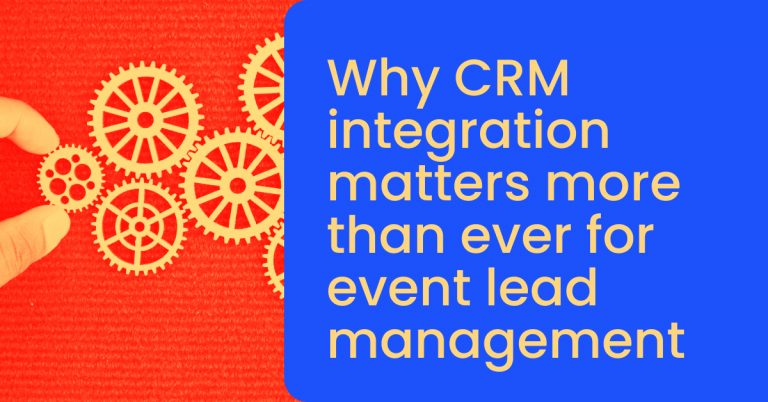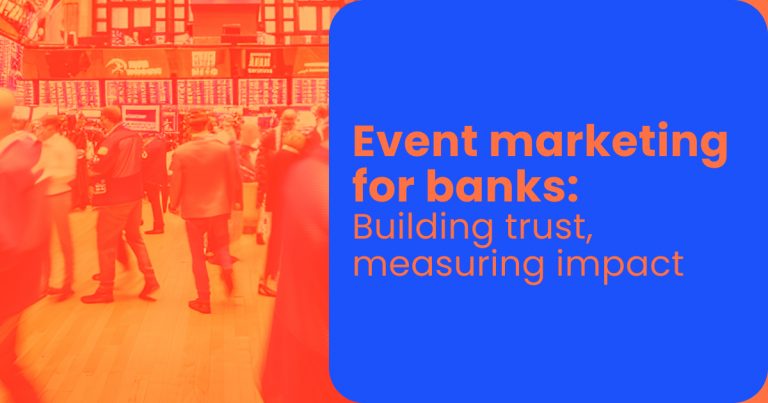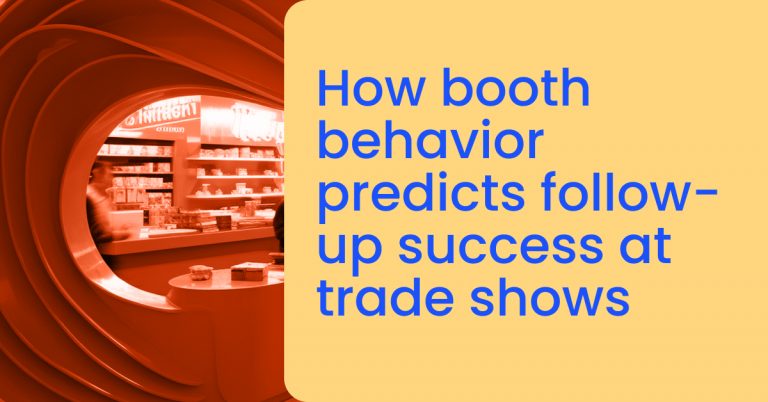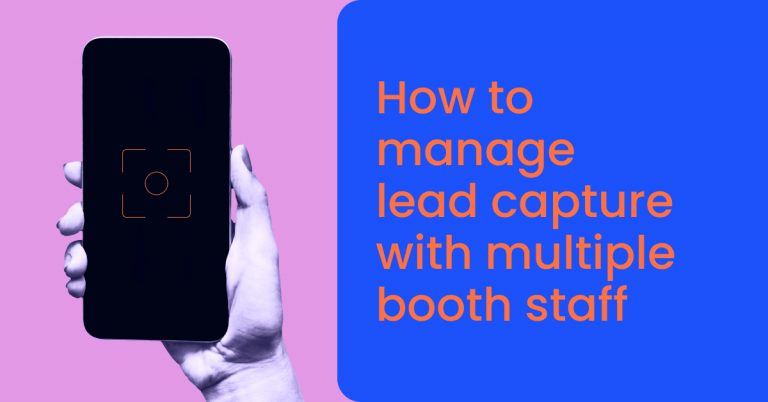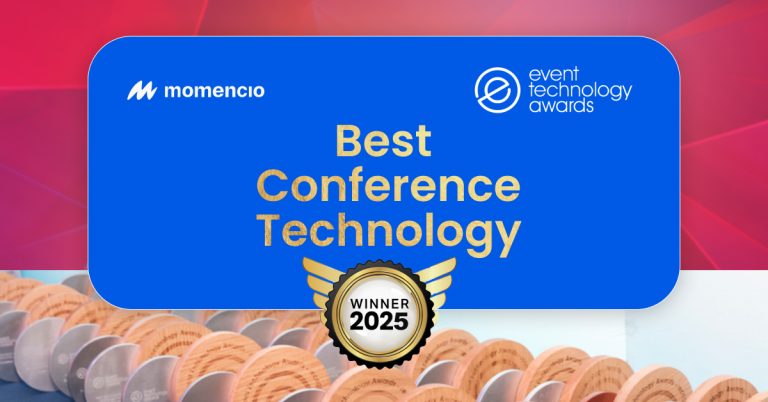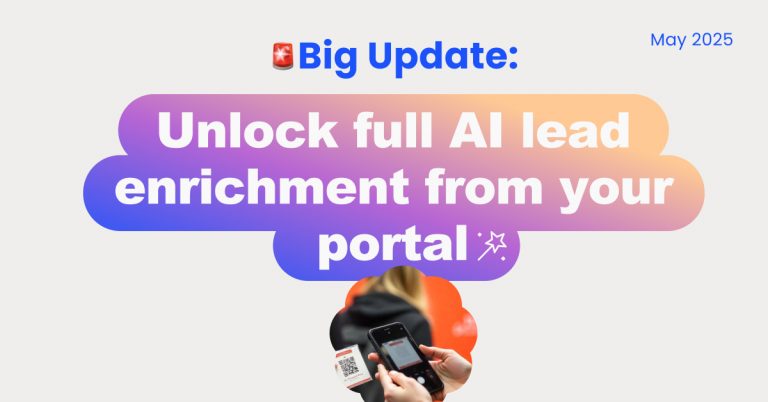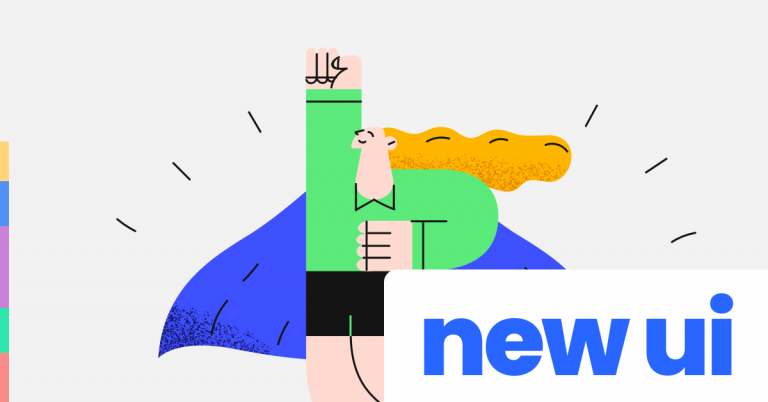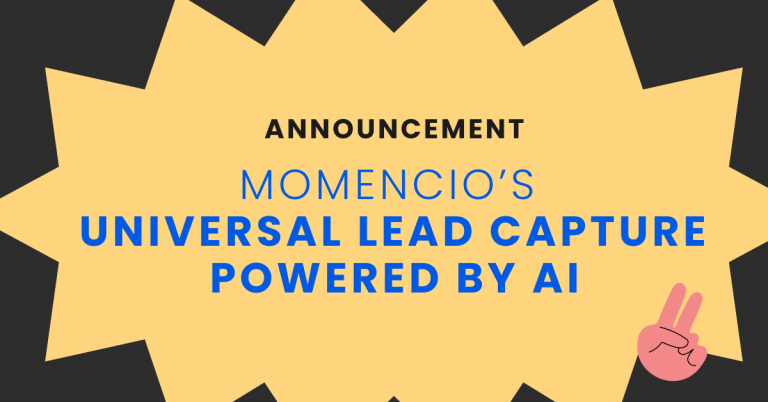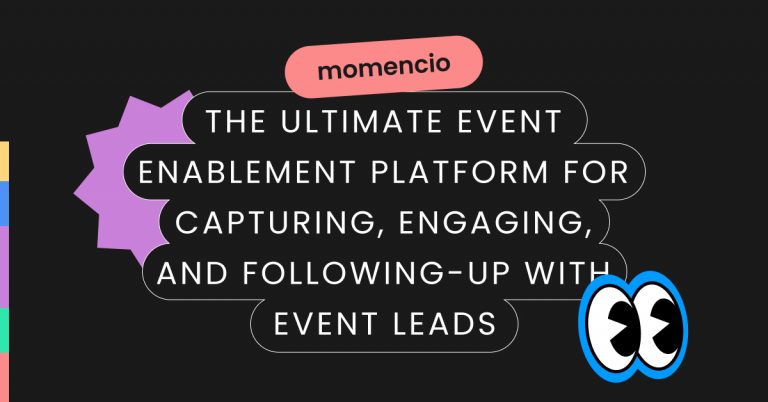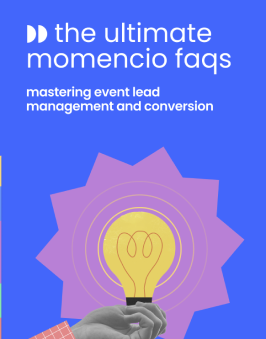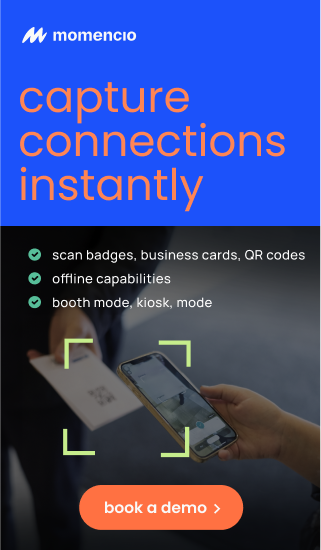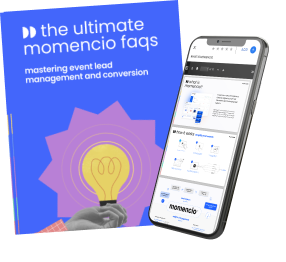Cybersecurity conferences are no exception, and the Cyber Security Summit Nashville 2025 is poised to attract some of the sharpest minds in digital protection and infrastructure resilience. For event marketers and field teams aiming to turn face-time into follow-through, this is a critical proving ground.
The average cost of a data breach is $4.45 million — up 15% over three years. That figure underscores why CISOs and senior execs are more selective than ever about the tech they consider, the booths they visit, and the solutions they explore. Flashy booths don’t cut it anymore — meaningful conversations and airtight follow-ups do.
The challenge? Most companies lose momentum between the booth and the boardroom. This article will show you how to flip that script.
We’ll cover what truly matters to the high-level decision makers attending this event, what mistakes most vendors make when trying to engage them, and how to use precision event marketing strategies that drive measurable pipeline — not just vanity metrics.
Whether you’re planning your first presence at Cyber Security Summit Nashville or optimizing your 10th, this guide will arm your team with practical, non-obvious tactics to stand out in a sea of competitors, engage senior security leaders, and build relationships that go far beyond badge scans.
✅ TL;DR
To help cybersecurity marketers maximize impact at Cyber Security Summit Nashville 2025, we break down advanced strategies for lead capture, high-value CISO engagement, and post-event follow-up. Learn how tools like momencio enable smarter lead scoring, real-time insights, and revenue-driven outcomes from security events.
Understanding the audience: The CISO mindset and what they really want
The typical attendee at Cyber Security Summit Nashville isn’t there for swag or superficial demos. They are Chief Information Security Officers, senior analysts, or infrastructure decision-makers carrying the weight of securing multi-million-dollar organizations. These professionals evaluate every interaction based on how it aligns with their strategic priorities. That means the traditional booth approach—loud visuals, generalized pitches, and rushed lead scans—simply doesn’t work for them.
CISOs come to events like this to answer one core question: what actually helps reduce risk without complicating their stack. They’re looking for solutions that integrate smoothly, don’t require excessive resources to deploy, and offer clarity in reporting and compliance. Their time at a summit is limited, so the brands that succeed are those who anticipate their questions, speak their language, and make meaningful use of each interaction.
Another thing to remember is the cautious nature of this audience. They are trained to identify red flags and will instantly disengage from anything that feels inflated, salesy, or unsubstantiated. This makes it critical to be concise, relevant, and credible in both conversations and content. Your event team needs to be briefed not just on product talking points, but on industry concerns like incident response frameworks, zero trust adoption, or risk scoring methods.
It’s also important to understand the broader context. These decision-makers are under immense pressure—from boards, from regulatory bodies, and from daily threat alerts. Their interest in any event solution is linked directly to how it can reduce complexity, protect data, or provide visibility in real time. That’s why the most successful vendors are those who can anchor every conversation in operational relevance. If you can frame your solution as helping them do their job faster, safer, or smarter, you’ve earned more than their attention—you’ve earned a follow-up.
3 uncommon truths about event marketing at cybersecurity conferences
1. The most successful booths prioritize intention over attention
In cybersecurity-focused events, more traffic doesn’t necessarily mean more impact. The most effective booths are often the least chaotic. Decision-makers like CISOs prefer calm, curated spaces that signal professionalism and focus. Rather than drawing a crowd, success is about creating room for strategic, in-depth conversations. Scheduled meetings and pre-qualified leads bring more value than spontaneous foot traffic. What matters most is showing that your team is there with purpose.
2. Lead capture starts with meaningful conversations, not badge scans
A badge scan isn’t the beginning of a relationship—it’s a record of one. In environments like Cyber Security Summit Nashville, your first few seconds of conversation define whether a prospect will stay engaged. Teams that begin with thoughtful, relevant observations or well-informed questions are more likely to spark genuine interest. Generic product pitches or feature-heavy intros tend to fall flat. Effective lead capture begins with relevance and trust, not giveaways.
3. Post-event engagement is where the real conversions happen
The time between event close and first follow-up is often where leads go cold. Most companies push out a templated recap email and call it a day. But senior decision-makers want continuity. If your follow-up lacks the same strategic depth and tone as your on-site conversations, the disconnect can cost you the deal. The brands that win are the ones that plan their follow-up journeys with the same attention as their booth design—clear, customized, and timely.
Lead capture tactics that actually convert in high-security events
Capturing leads at a cybersecurity summit is not about quantity — it’s about quality and precision. In an environment where the majority of attendees are tasked with protecting critical infrastructure and navigating complex tech stacks, your capture process needs to be as thoughtful as your pitch. Here’s how to approach it.
Start by considering context. Most cybersecurity executives are used to being pitched solutions that sound the same. Instead of leading with what your product does, structure your lead capture process around what the attendee needs. That means having your team ask better questions. Skip the “What brings you to the event today?” and get specific. Ask about pain points related to threat detection, real-time reporting, or compliance pressure. Capture those insights alongside contact information.
Next, build tagging into the process from the beginning. During conversations, allow booth staff to flag leads by buying role, level of urgency, and area of interest. A clean capture form or app interface can make this seamless. By tagging leads based on real conversations, you’ll save time in post-event segmentation and ensure that follow-ups are not just timely but tailored.
Avoid the trap of high-volume, low-value giveaways. At cybersecurity events, decision-makers are less interested in freebies and more curious about insights. Consider offering an exclusive post-event debrief, a benchmarking report, or curated content tied to their job function. It’s not about gimmicks — it’s about creating an exchange of value that begins with relevance and ends with credibility.
Make sure your tools don’t get in the way. The worst thing you can do is slow down a high-value conversation with clunky apps or multi-step capture processes. Everything from scanning to follow-up scheduling should be quick, simple, and error-proof. The more seamless it feels, the more confident your lead will be in continuing the conversation after the event.
The real power in effective lead capture lies in its ability to fuel better sales conversations, not just fill your CRM. When it’s done right, your event team becomes an extension of your sales motion — precise, informed, and trusted by the people who matter most.
6 best practices for Cyber Security Summit Nashville success
This summit isn’t just another day on the event calendar. It’s a high-stakes environment where every interaction can influence a multi-year enterprise deal or spark a new customer relationship. To make the most of it, execution needs to be sharp, strategic, and aligned across your team. Here are six specific best practices that can make or break your presence at Cyber Security Summit Nashville.
1. Align your messaging to CISO-level outcomes
What resonates with this audience isn’t how a product works, but what it enables. Your booth content, demos, and conversations should connect to strategic outcomes — reducing risk exposure, improving compliance readiness, or accelerating threat response. Avoid feature lists. Lead with how your solution helps make smarter decisions, faster.
How momencio helps: By providing a library of brand-consistent, customizable templates, teams can prep messaging ahead of time that maps to different buyer personas. This makes every booth interaction intentional and targeted.
2. Train your team on conversation-first engagement
Most people default to demo mode or elevator pitches. At an event like this, that’s a fast way to get tuned out. Instead, equip your staff to ask smart, context-aware questions. The right opening line can create space for a high-value discussion — and set the tone for a follow-up.
How momencio helps: With pre-configured scripts and conversation prompts tied to lead data, reps can focus less on improvising and more on listening and capturing the right info in real time.
3. Schedule meetings before the summit
Walking the show floor in hopes of chance meetings isn’t a strategy. It’s a gamble. Prioritize outreach to book 1:1 meetings in advance, especially with executives and high-value targets. These meetings are often where deals begin.
How momencio helps: The platform supports pre-event lead engagement, allowing teams to send personalized invites and content that warm up prospects and make scheduling easier.
4. Optimize your lead capture for follow-up, not just contact collection
A name and email aren’t enough. The goal is to capture what was discussed, what matters to the lead, and what next step they expect. This creates a better experience and increases the chances of post-event conversion.
How momencio helps: With custom lead tagging, note capture, and integration into your CRM, momencio ensures every lead arrives with actionable context — not just a form fill.
5. Create dedicated follow-up workflows before the event
Waiting until after the summit to figure out your email sequences or sales outreach plans is too late. Build those workflows in advance, so the moment the event ends, your follow-up engine starts running.
How momencio helps: With automated email marketing and lead nurturing tools, teams can set up tailored post-event sequences that feel personal, not promotional.
6. Use real-time data to coach and adapt
Events are live environments, which means things change fast. Being able to see what’s working — who’s engaging, what content is resonating — helps teams adjust and improve in the moment.
How momencio helps: Real-time dashboards give marketing and sales leaders visibility into booth performance, lead volume, and content engagement as it happens, allowing for mid-event strategy shifts.
When your presence is built on strategy, not just setup, the summit becomes more than a brand moment — it becomes a pipeline opportunity. Let me know when you’re ready for the next section: “The follow-up gap: Why most teams lose deals after the summit.
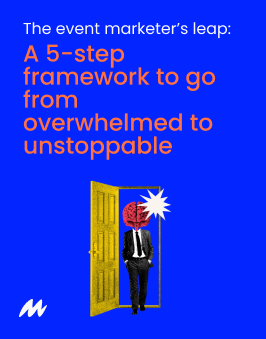
The follow-up gap: Why most teams lose deals after the summit
For many companies, the real breakdown happens after the booth is packed up. Despite collecting dozens or even hundreds of leads, the momentum built during the event often fades quickly. This isn’t just a missed opportunity — it’s a failure in process.
What typically happens is this: leads get exported, dumped into a spreadsheet, or synced to a CRM without any prioritization or context. Sales teams receive lists with little understanding of who’s worth calling first or what was discussed. Marketing may send a generic follow-up email that doesn’t reflect the conversation that happened at the booth. The result is silence. Or worse, disinterest.
This gap isn’t a matter of effort. It’s a matter of preparation. When follow-up is treated as an afterthought, it lacks precision. Attendees move on, their inboxes fill up, and the sense of relevance evaporates. And because the conversations weren’t properly captured or scored, your most promising leads are buried in a pile of unqualified names.
The solution starts with rethinking the follow-up as part of the event itself, not a separate step. The teams who win are the ones who plan every touchpoint in advance — from content and timing to sender and CTA. They know which leads to prioritize, what each segment cares about, and how to deliver value instead of more noise.
Automation can help, but only if it’s fed with the right inputs. That’s where real-time lead tagging, smart note capture, and personalized content delivery make a difference. The goal isn’t just to stay in touch. It’s to stay relevant.
Winning the post-event phase is about speed, clarity, and continuity. The faster you follow up, and the more connected that outreach feels to the in-person conversation, the more likely you are to turn interest into action.
How momencio helps teams win post-event
When the final session wraps and attendees head back to their offices, most event vendors are already losing ground. The clock starts ticking on your ability to stay relevant. This is where momencio creates separation — by making post-event execution as strategic and precise as the event itself.
Instead of exporting spreadsheets and hoping for the best, momencio centralizes all captured data — every conversation note, every engagement, every piece of shared content — into one unified platform. That means your sales team doesn’t get handed a static lead list. They get context. They see who engaged with which content, what questions were asked, and what materials were requested. That clarity fuels better conversations from the first follow-up.
The platform’s intelligent follow-up engine allows you to build and automate personalized sequences before the event even begins. You can prepare content variations for different personas or buyer stages, and let the system trigger the right message based on real-time lead behavior. This helps keep your outreach timely, relevant, and consistent with the tone of your booth interactions.
Another core strength is momencio’s ability to track engagement after the event. If a lead opens your follow-up microsite, re-watches a demo video, or shares content with a colleague, you’ll know. That behavioral data isn’t just helpful for sales. It’s essential for prioritizing your pipeline and knowing when to escalate.
Sales and marketing alignment is often promised but rarely delivered. momencio changes that by serving as a shared source of truth. Everyone involved in the event — from pre-event outreach to post-event sales calls — operates with the same real-time insights.
Events shouldn’t be siloed campaigns. They should be an integrated part of your revenue strategy. momencio helps close the loop, ensuring that the value created during the summit doesn’t dissipate in the days that follow.
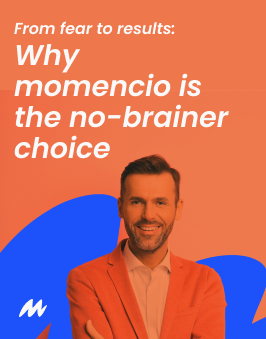
Make your Nashville appearance count
Cyber Security Summit Nashville isn’t just another line on the events calendar. It’s an opportunity to build credibility, connect with high-value decision-makers, and position your brand as a trusted partner in a high-risk, high-stakes industry. But success at this kind of event doesn’t come from just showing up. It’s earned through smart planning, relevant engagement, and seamless follow-up. The teams that win are the ones who understand that lead capture is only the beginning — and that post-event execution is where the deals are made. Plan for both, and you’ll come away with more than booth traffic. You’ll come away with pipeline.
FAQs
- What kind of lead capture approach works best at cybersecurity events?
- A conversation-led, insight-driven approach that captures context in addition to contact details. The best results come from aligning capture tactics with the audience’s expectations and industry concerns.
- How soon should we follow up after the event?
- Within 48 hours is ideal. The faster you follow up with personalized messaging tied to the interaction, the more likely you are to remain top of mind and drive conversion.
- What do high-level attendees like CISOs expect from vendors at events?
- They value precision, relevance, and depth. Your conversations should speak directly to strategic challenges and avoid generic messaging or overly promotional pitches.
- How do we align our event team and sales team for better post-event execution?
- Use shared tools that provide unified visibility. Ensure that all captured data is clean, enriched, and immediately accessible by sales, with key insights tagged and prioritized.
- How can momencio help with event ROI?
- By automating lead scoring, personalizing follow-ups, and tracking post-event engagement in real time, momencio enables teams to connect event activity directly to revenue outcomes.
